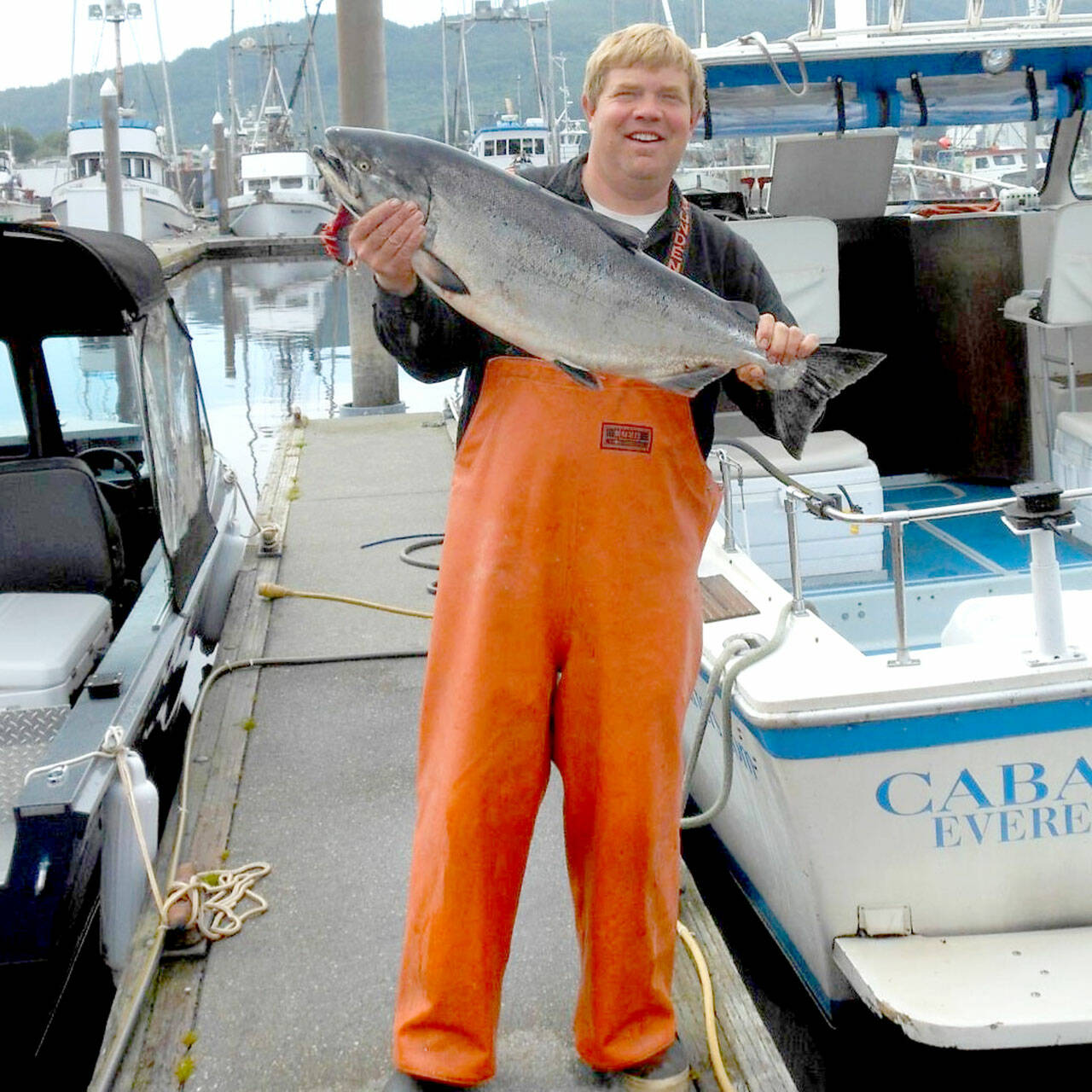Despite projected returns which signal an increase of chinook and coho to the coast and Puget Sound, expect hatchery chinook fishing to be constrained again this summer by underperforming salmon populations listed as threatened or endangered under the Endangered Species Act.
Puget Sound chinook are also expected to be up slightly with around 259,000 forecast to return in 2023, versus 250,440 in 2022. The return of hatchery kings is expected to be around 10,000 fish higher than last year, while the return of natural-origin wild chinook is expected to be down slightly, which is likely to impact fishing opportunity.
Coho returns to Puget Sound and surrounding rivers are forecast to be up in 2023 at about 760,000 wild and hatchery coho, 32 percent above the 10-year average and 16 percent (hatchery) and 11 percent (wild) from 2022 returns.
Last year’s forecast called for 666,648 returning coho. Returns are expected to be up relative to last year’s forecasts for most Puget Sound rivers, with the notable exception of the Skagit River in North Puget Sound, where this year’s forecast is down considerably from last year and will require more restrictive fishery measures to meet conservation objectives.
Those Skagit numbers impact the coho fisheries in the Strait of Juan de Fuca, so look for limitations when the silvers start to flood in.
Pink year
Pinks, which return to Puget Sound only in odd-numbered years, will also offer opportunities for anglers this summer.
The current total prediction for pinks returning throughout the region is about 3.95 million fish, very similar to the 3.77 million that ultimately returned in 2021 and far above the 2017 run that cratered pink stocks.
Pinks will be especially thick in Hood Canal, which is projected to receive nearly 500,000 returners. The Strait of Juan de Fuca is expected to see 365,000 pinks stick around.
While relatively small (3 to 5 pounds), pinks are the fastest-growing Pacific salmon species and return in bulk during odd-numbered years after spending two years in the ocean before migrating to natal rivers.
Pinks mainly spawn in lower river stretches, which is why they’re able to be less impacted by urban development, and they don’t spend an extended time in freshwater.
Coastal runs
The 2023 coastal hatchery Chinook forecast is up 7 percent and the wild forecast is up 8 percent from the recent 10-year average. The hatchery forecast is down 5 percent and the wild forecast is down 4 percent compared with the 2022 forecast.
The 2023 coastal Chinook forecast is 81,829 (39,153 are wild and 42,675 are hatchery).
Coho returns on the Washington coast are expected to grow in 2023 to just over 519,329, up from the forecast of 454,693 fish a year ago.
The coast-wide hatchery coho forecast shows a 30 percent improvement, and wild coho are up 2 percent compared with the 2022 forecast. The recent 10-year average for hatchery coho is up 100 percent and the wild coho is up 53 percent.
Rockfish regulations
Bottomfishing opens up off the coast Saturday in Marine Areas 3 (La Push) and 4 (Neah Bay west of the Bonilla-Tatoosh Line) with new species-specific regulations for copper rockfish, quillback rockfish and vermilion rockfish.
Possession of the three rockfish species will be prohibited in May, June and July, when peak effort for bottomfish occurs. This restriction is intended to reduce catch to stay within state-specific federal harvest limits. Recent scientific assessments for the three rockfish species indicate populations are likely healthy but smaller than previously understood.
The daily aggregate limit is nine bottomfish and includes a sub-limit of seven rockfish. Daily limit is two lingcod and one cabezon per angler and no minimum size restriction.
Neah Bay (Marine Area 4 east of Bonilla-Tatoosh) is open year-round for bottomfishing. Lingcod fishing is open March 11 through Oct. 21. Daily aggregate limit is nine bottomfish and includes a sub-limit of seven black, blue and deacon rockfish, and yellowtail and widow rockfish. Daily limit is two lingcod and one cabezon per angler and no minimum size restriction.
A bottomfish limit doesn’t include halibut, which has a daily limit of one halibut, and an annual limit of four halibut.
Anglers meeting
John Beath, an expert angler and owner/operator of SquidPro Charters — and also a member of the North Olympic chapter of Puget Sound Anglers, will speak to the group on Wednesday.
The meeting will be held at the Sequim Elks Lodge, 143 Port Williams Road, with fish tales and socializing starting at 6:30 p.m. and the meeting beginning at 7 p.m.
Beath will provide an overview of his charter operations, techniques he uses to get clients their fish and how anglers can use his ideas.
A short business meeting, fishing reports and raffle drawings will follow his talk. Raffles are for members only, but the public can join the group for $35 annually, including a monthly subscription to The Reel News.

